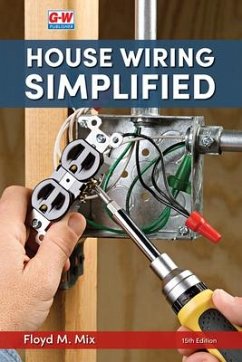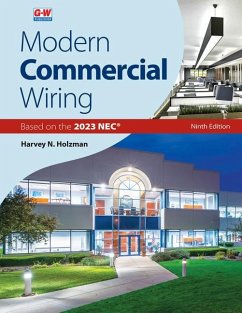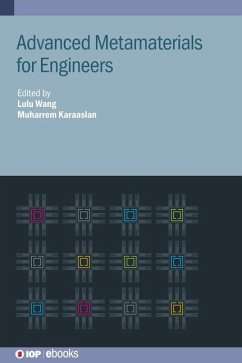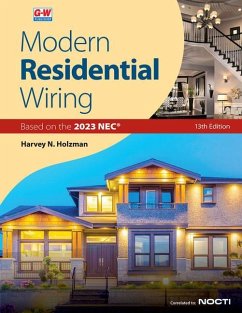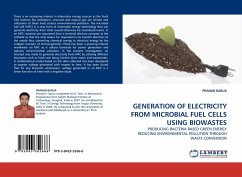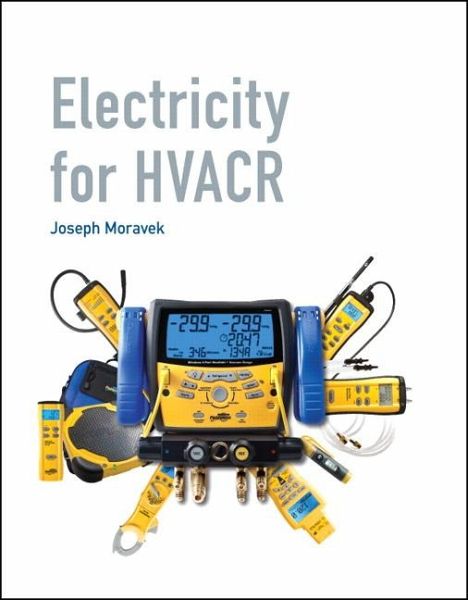
Electricity for Hvacr
Versandkostenfrei!
Versandfertig in über 4 Wochen
206,99 €
inkl. MwSt.

PAYBACK Punkte
103 °P sammeln!
For courses in HVACR repair
Electricity for HVACR was written to help aspiring technicians with no electrical experience or training to understand the operation of HVACR electrical circuits. The text avoids theoretical discussions of circuits in order to focus on its main goal—showing students how to diagnose and solve electrical problems in HVACR systems. Using the spiral-learning concept, each new unit of the text builds on content learned from the previous unit. From how to use diagnostic tools and instruments safely to understanding diagrams and even coverage of the green ECM motor, the text’s many examples, tips, and step-by-step instruction help students learn to apply troubleshooting skills to real electrical problems.
Product Description
Electricity for HVACR was written to help aspiring technicians with no electrical experience or training to understand the operation of HVACR electrical circuits. The text avoids theoretical discussions of circuits in order to focus on its main goal–showing students how to diagnose and solve electrical problems in HVACR systems. Using the spiral-learning concept, each new unit of the text builds on content learned from the previous unit. From how to use diagnostic tools and instruments safely to understanding diagrams and even coverage of the green ECM motor, the text’s many examples, tips, and step-by-step instruction help students learn to apply troubleshooting skills to real electrical problems.
Features + Benefits
For courses in HVACR repair
Electricity for HVACR was written to help aspiring technicians with no electrical experience or training to understand the operation of HVACR electrical circuits. The text avoids theoretical discussions of circuits in order to focus on its main goal–showing students how to diagnose and solve electrical problems in HVACR systems. Using the spiral-learning concept, each new unit of the text builds on content learned from the previous unit. From how to use diagnostic tools and instruments safely to understanding diagrams and even coverage of the green ECM motor, the text’s many examples, tips, and step-by-step instruction help students learn to apply troubleshooting skills to real electrical problems.
Hallmark Features:
Enlarged Electrical Diagrams (14 total) make it easier for the learner to follow diagrams from discussions by the instructor or information in the book.
The electrical diagrams are actual diagrams one might come across in the field.
The diagrams cover the gamut of HVACR including gas heat, electric heat, and heat pumps; residential, commercial, and industrial air conditioning systems, including chilled water systems.
The electrical diagrams where selected to represent all areas of HVACR, yet basic enough to be understood by the entry-level technician.
Each Unit provides students with attainable goals and solid review of the concepts.
Each unit opens with a list of learning objectives entitled What You Need to Know. These objectives serve as an outline and, more importantly, provide the student with attainable learning goals.
Each Unit concludes with a Summary that recaps and highlights the unit content.
Review Questions found at the end of each unit challenge the reader to test their understanding of the lesson. The questions cover each important aspect of the unit’s content. Some questions require identification of HVACR components; use of troubleshooting skills; and tracing wiring diagrams.
Tips throughout the text offer useful insights for new (and experienced) technicians.
Tech Tips provide hands-on hints based on the author’s years of experience in the field. These tips offer the new (and experienced) technician practical insights into key HVACR components, their installation, and troubleshooting techniques.
Safety Tips offer crucial, and sometimes life-saving, pointers for the technician in the field.
Green Tips highlight new technologies and components that are being used in the field. These tips offer the new technician a chance to become familiar with some of the latest advancements in the HVACR industry.
The text shows students, step-by-step, how to troubleshoot and repair HVACR systems.
Sequence of Operations boxes describe, step by step, the operation of specific pieces of equipment. The numbered steps are tied to a numbered diagram, which creates a visual learning experience for the student.
Troubleshooting boxes offer instruction on how to troubleshoot an electrical problem, one step at a time. To aid student comprehension of the troubleshooting process, each numbered step of instruction is matched to a numbered photo of actual equipment or a numbered diagram.
Examples are offered to help students work with formulas and calculations necessary in the field. Examples present a real-world problem and then walk the student through the steps of the solution.
The Service Ticket presented at the end of each unit puts the student in an on-the-job situation involving a problem that requires the concepts and techniques from the unit to arrive at a satisfactory resolution. The scenario includes an evaluation and assessment of the problem, the most probable cause, and a solution that satisfies both the customer and the technician’s employer.
Comprehensive Supplement Package for instructors and students.
Instructor’s Solutions Manual includes solutions to the end of unit questions and the lab manual.
PowerPoint Slides includes a comprehensive, colorful image bank and separate lecture note slides.
Lab Manual (print) offers basic coverage of all of the major lessons in each unit.
MyTest provides a comprehensive set of test questions that match the key objectives for each unit.
Unit 1: Read This Unit First: What I Need to Know to Understand Electricity
Unit 2: Ohms Law
Unit 3: Safe Use of Electrical Instruments
Unit 4: Electrical Fasteners
Unit 5: Power Distribution
Unit 6: National Electric Code
Unit 7: Electrical Installation of HVAC
Unit 8: Transformers
Unit 9: Relays, Contactors and Motor Starters
Unit 10: Capacitors
Unit 11: Thermostats
Unit 12: Pressure Switches
Unit 13: Miscellaneous Electrical Components
Unit 14: How Do Motors Work?
Unit 15: Motor Types
Unit 16: Green Electronically Commutated Motors (ECM)
Unit 17: Understanding Electrical Diagrams
Unit 18: Resistors
Unit 19: Fundamentals of Solid State Circuits
Unit 20: Circuit Boards
Unit 21: Air Conditioning Systems
Unit 22: Gas Heating Systems
Unit 23: Electric Heating Systems
Unit 24: Heat Pumps
Unit 25: How to Start Electrical Troubleshooting
Unit 26: Basic Electrical Troubleshooting Techniques
Unit 27: Advanced Electrical Troubleshooting Techniques
Unit 28: Practical Troubleshooting
Electricity for HVACR was written to help aspiring technicians with no electrical experience or training to understand the operation of HVACR electrical circuits. The text avoids theoretical discussions of circuits in order to focus on its main goal—showing students how to diagnose and solve electrical problems in HVACR systems. Using the spiral-learning concept, each new unit of the text builds on content learned from the previous unit. From how to use diagnostic tools and instruments safely to understanding diagrams and even coverage of the green ECM motor, the text’s many examples, tips, and step-by-step instruction help students learn to apply troubleshooting skills to real electrical problems.
Product Description
Electricity for HVACR was written to help aspiring technicians with no electrical experience or training to understand the operation of HVACR electrical circuits. The text avoids theoretical discussions of circuits in order to focus on its main goal–showing students how to diagnose and solve electrical problems in HVACR systems. Using the spiral-learning concept, each new unit of the text builds on content learned from the previous unit. From how to use diagnostic tools and instruments safely to understanding diagrams and even coverage of the green ECM motor, the text’s many examples, tips, and step-by-step instruction help students learn to apply troubleshooting skills to real electrical problems.
Features + Benefits
For courses in HVACR repair
Electricity for HVACR was written to help aspiring technicians with no electrical experience or training to understand the operation of HVACR electrical circuits. The text avoids theoretical discussions of circuits in order to focus on its main goal–showing students how to diagnose and solve electrical problems in HVACR systems. Using the spiral-learning concept, each new unit of the text builds on content learned from the previous unit. From how to use diagnostic tools and instruments safely to understanding diagrams and even coverage of the green ECM motor, the text’s many examples, tips, and step-by-step instruction help students learn to apply troubleshooting skills to real electrical problems.
Hallmark Features:
Enlarged Electrical Diagrams (14 total) make it easier for the learner to follow diagrams from discussions by the instructor or information in the book.
The electrical diagrams are actual diagrams one might come across in the field.
The diagrams cover the gamut of HVACR including gas heat, electric heat, and heat pumps; residential, commercial, and industrial air conditioning systems, including chilled water systems.
The electrical diagrams where selected to represent all areas of HVACR, yet basic enough to be understood by the entry-level technician.
Each Unit provides students with attainable goals and solid review of the concepts.
Each unit opens with a list of learning objectives entitled What You Need to Know. These objectives serve as an outline and, more importantly, provide the student with attainable learning goals.
Each Unit concludes with a Summary that recaps and highlights the unit content.
Review Questions found at the end of each unit challenge the reader to test their understanding of the lesson. The questions cover each important aspect of the unit’s content. Some questions require identification of HVACR components; use of troubleshooting skills; and tracing wiring diagrams.
Tips throughout the text offer useful insights for new (and experienced) technicians.
Tech Tips provide hands-on hints based on the author’s years of experience in the field. These tips offer the new (and experienced) technician practical insights into key HVACR components, their installation, and troubleshooting techniques.
Safety Tips offer crucial, and sometimes life-saving, pointers for the technician in the field.
Green Tips highlight new technologies and components that are being used in the field. These tips offer the new technician a chance to become familiar with some of the latest advancements in the HVACR industry.
The text shows students, step-by-step, how to troubleshoot and repair HVACR systems.
Sequence of Operations boxes describe, step by step, the operation of specific pieces of equipment. The numbered steps are tied to a numbered diagram, which creates a visual learning experience for the student.
Troubleshooting boxes offer instruction on how to troubleshoot an electrical problem, one step at a time. To aid student comprehension of the troubleshooting process, each numbered step of instruction is matched to a numbered photo of actual equipment or a numbered diagram.
Examples are offered to help students work with formulas and calculations necessary in the field. Examples present a real-world problem and then walk the student through the steps of the solution.
The Service Ticket presented at the end of each unit puts the student in an on-the-job situation involving a problem that requires the concepts and techniques from the unit to arrive at a satisfactory resolution. The scenario includes an evaluation and assessment of the problem, the most probable cause, and a solution that satisfies both the customer and the technician’s employer.
Comprehensive Supplement Package for instructors and students.
Instructor’s Solutions Manual includes solutions to the end of unit questions and the lab manual.
PowerPoint Slides includes a comprehensive, colorful image bank and separate lecture note slides.
Lab Manual (print) offers basic coverage of all of the major lessons in each unit.
MyTest provides a comprehensive set of test questions that match the key objectives for each unit.
Unit 1: Read This Unit First: What I Need to Know to Understand Electricity
Unit 2: Ohms Law
Unit 3: Safe Use of Electrical Instruments
Unit 4: Electrical Fasteners
Unit 5: Power Distribution
Unit 6: National Electric Code
Unit 7: Electrical Installation of HVAC
Unit 8: Transformers
Unit 9: Relays, Contactors and Motor Starters
Unit 10: Capacitors
Unit 11: Thermostats
Unit 12: Pressure Switches
Unit 13: Miscellaneous Electrical Components
Unit 14: How Do Motors Work?
Unit 15: Motor Types
Unit 16: Green Electronically Commutated Motors (ECM)
Unit 17: Understanding Electrical Diagrams
Unit 18: Resistors
Unit 19: Fundamentals of Solid State Circuits
Unit 20: Circuit Boards
Unit 21: Air Conditioning Systems
Unit 22: Gas Heating Systems
Unit 23: Electric Heating Systems
Unit 24: Heat Pumps
Unit 25: How to Start Electrical Troubleshooting
Unit 26: Basic Electrical Troubleshooting Techniques
Unit 27: Advanced Electrical Troubleshooting Techniques
Unit 28: Practical Troubleshooting
Electricity for HVACR was written to help aspiring technicians with no electrical experience or training to understand the operation of HVACR electrical circuits. The text avoids theoretical discussions of circuits in order to focus on its main goal–showing students how to diagnose and solve electrical problems in HVACR systems. Using the spiral-learning concept, each new unit of the text builds on content learned from the previous unit. From how to use diagnostic tools and instruments safely to understanding diagrams and even coverage of the green ECM motor, the text’s many examples, tips, and step-by-step instruction help students learn to apply troubleshooting skills to real electrical problems.



